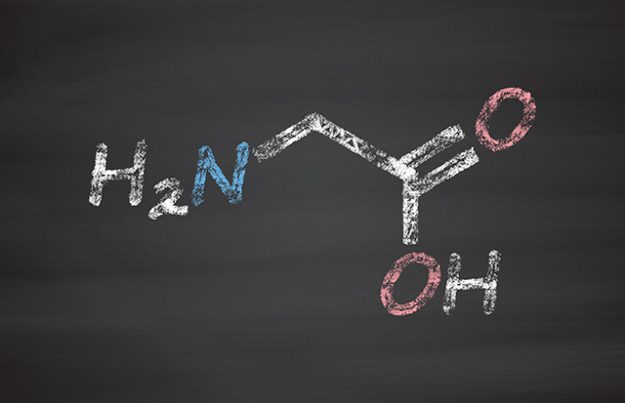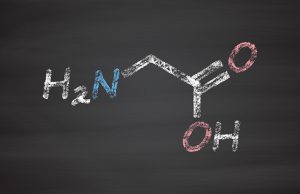
Glycine sources, health benefits and uses
Tuesday, September 12, 2017 by Earl Garcia
http://www.naturalpedia.com/glycine-sources-health-benefits-and-uses.html

Glycine is an amino acid that was discovered by Henri Braconnot in 1820. According to an Amino Acids Guide entry, the discovery was the first instance where a pure amino acid was obtained from a protein through acidic hydrolysis.
Glycine is classified as a non-essential amino acid, which means that the body is able to produce it. The nutrient is considered the smallest and simplest form of amino acid that contains only a single hydrogen forming its chain. Glycine is the second most common amino acid found in human enzymes and proteins.
According to the SELF Nutrition Data website, gelatin-based desserts and snacks are an excellent source of glycine. Red meat — such as pork, beef, and lamb — poultry and seafood are also notably rich in the important amino acid. Likewise, glycine can be found in great abundance in various fruits and vegetables such as watercress, kale, cabbage, and spinach as well as cauliflower, banana, kiwi fruit and cucumber.
Medicinal uses for glycine
Glycine is an essential component in the production of various types of acids such as nucleic acids, bile acids, creatine phosphate, and porphyrins. The amino acid is found to regulate and facilitate many vital processes in producing these acids.
Glycine is best known for its beneficial effects on the central nervous system. The amino acid works with taurine and gamma-amino butyric acid to inhibit the hyper-excitability in the brain stem and the spinal cord. The nutrient does this by eliminating chloride and potassium, according to an article on the Amino Acid Studies website. Likewise, taking glycine with inositol is found to address aggressive behavior.
The amino acid is also a vital component of creatine synthesis. Creatine provides muscles with a direct energy source and promotes tissue buildup and strength. This makes glycine an important amino acid for athletes who look to increase muscle mass and performance.
Likewise, glycine is essential in the body’s hormone regulation. It is found to facilitate the biosynthesis of both estrogenic and androgenic hormones. The amino acid is also touted to stimulate the production of human growth hormone. Glycine promotes prostate health as well. According to a Nutritional Supplements Health Guide entry, taking glycine supplements along with alanine and glutamic acid may eliminate retained urine caused by benign prostatic hyperthophy (enlarged prostate).
In addition, glycine is touted to promote blood sugar control by converting glucose into energy. Glycine’s sweet flavor makes it an ideal sugar substitute for people who have type-2 diabetes. Past studies have shown that taking glycine may improve the long-term blood sugar levels in patients. Glycine is touted for its potential use in cancer treatment as well. The amino acid is found to inhibit angiogenesis (formation of new cells), which in turn lowers the odds of developing cancerous melanoma and tumors.
The amino acid is notably effective in enhancing cardiovascular health too. Taking a one-time dose of 20 grams of glycine is found to effectively reduce both cholesterol and triglyceride levels. Glycine is also known to relieve gout by facilitating uric acid clearance. Taking glycine with arginine is also shown to speed up wound healing and bone repair.
Body systems supported by glycine
Glycine is particularly beneficial in maintaining a healthy central nervous system. Likewise, the amino acid supports both the muscular and the endocrine systems. Glycine also enhances the body’s overall cardiovascular profile and bone integrity. It is also essential in promoting men’s health.
Where to learn more
- Acrylamide production in foods could be slashed 40 percent by citric acid, glycine additives
- The best and worst forms of magnesium to take as a supplement
- 6 Health Benefits of Bone Broth & How to Make Your Own
- What Foods Are High in Amino Acids?
Summary
Glycine mitigates aggression and hyper-excitability of the nervous system.
Glycine prevents diabetes, high cholesterol, and cancer and tumors
Glycine alleviates gout, bone damage, and prostate-related conditions.
Glycine is particularly beneficial to the central nervous system.
Glycine supports both the muscular and the endocrine systems.
Glycine improves cardiovascular profile, bone integrity, and men’s health.
Sources include:
Tagged Under: Tags: Glycine






